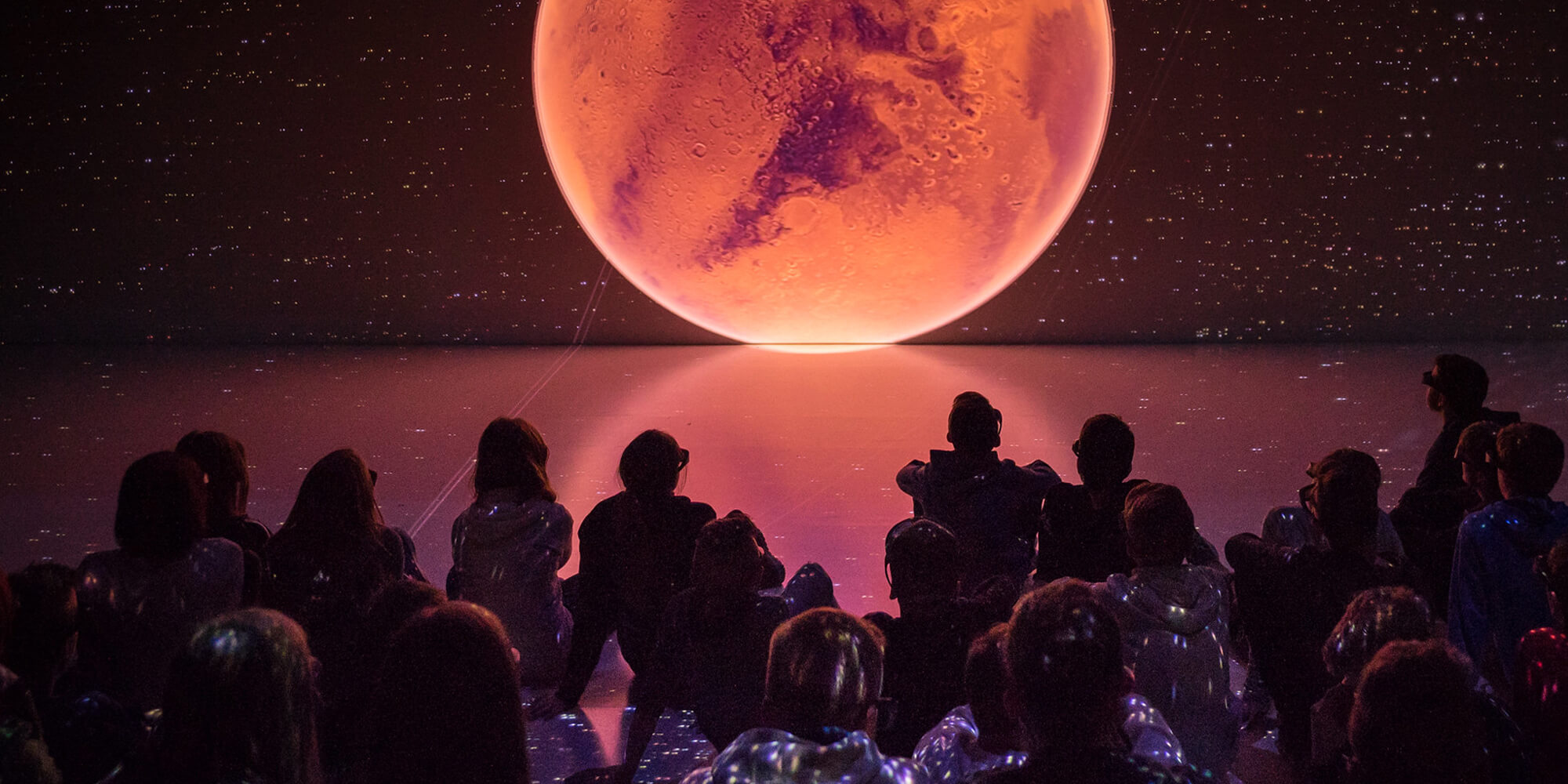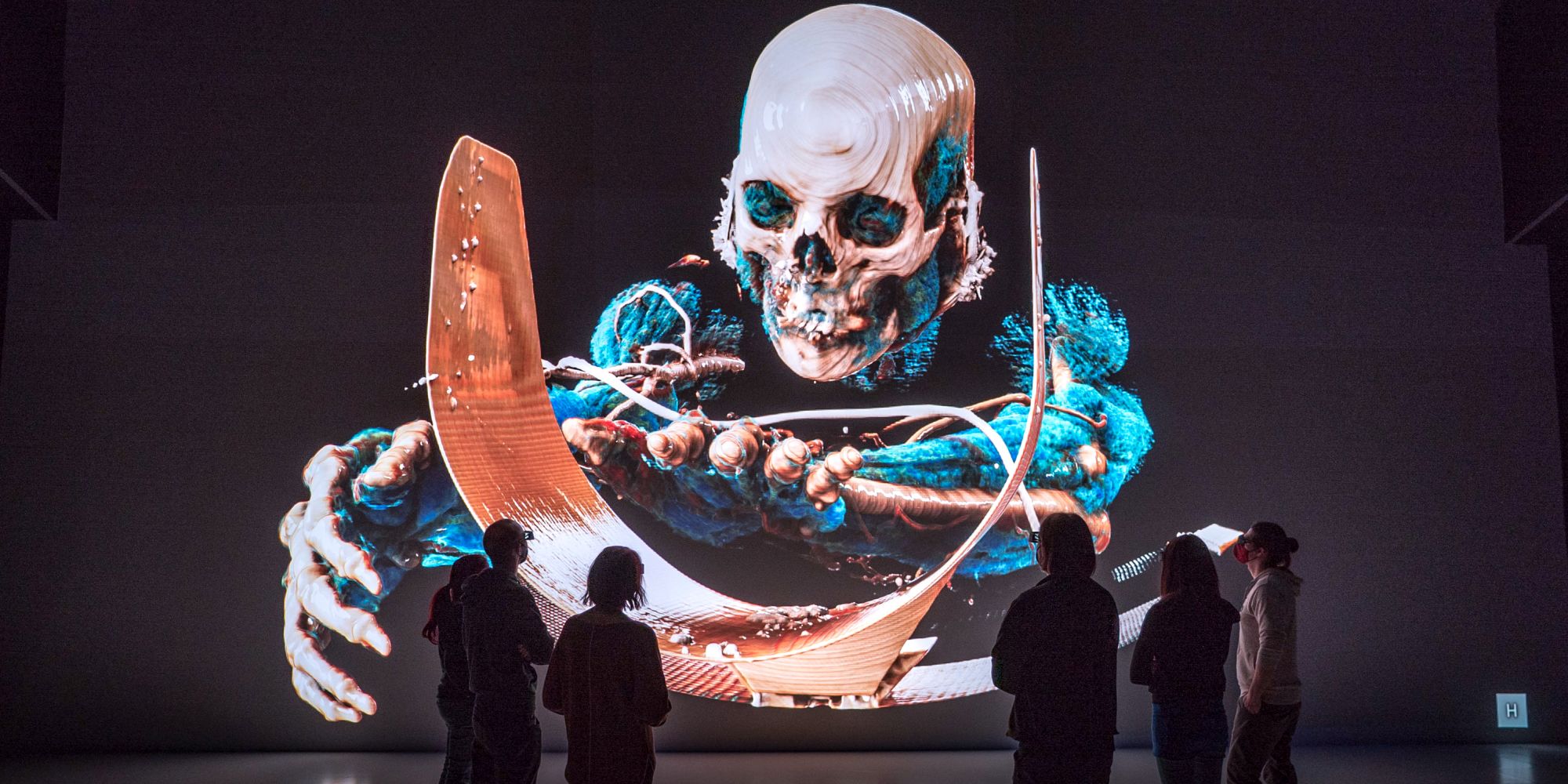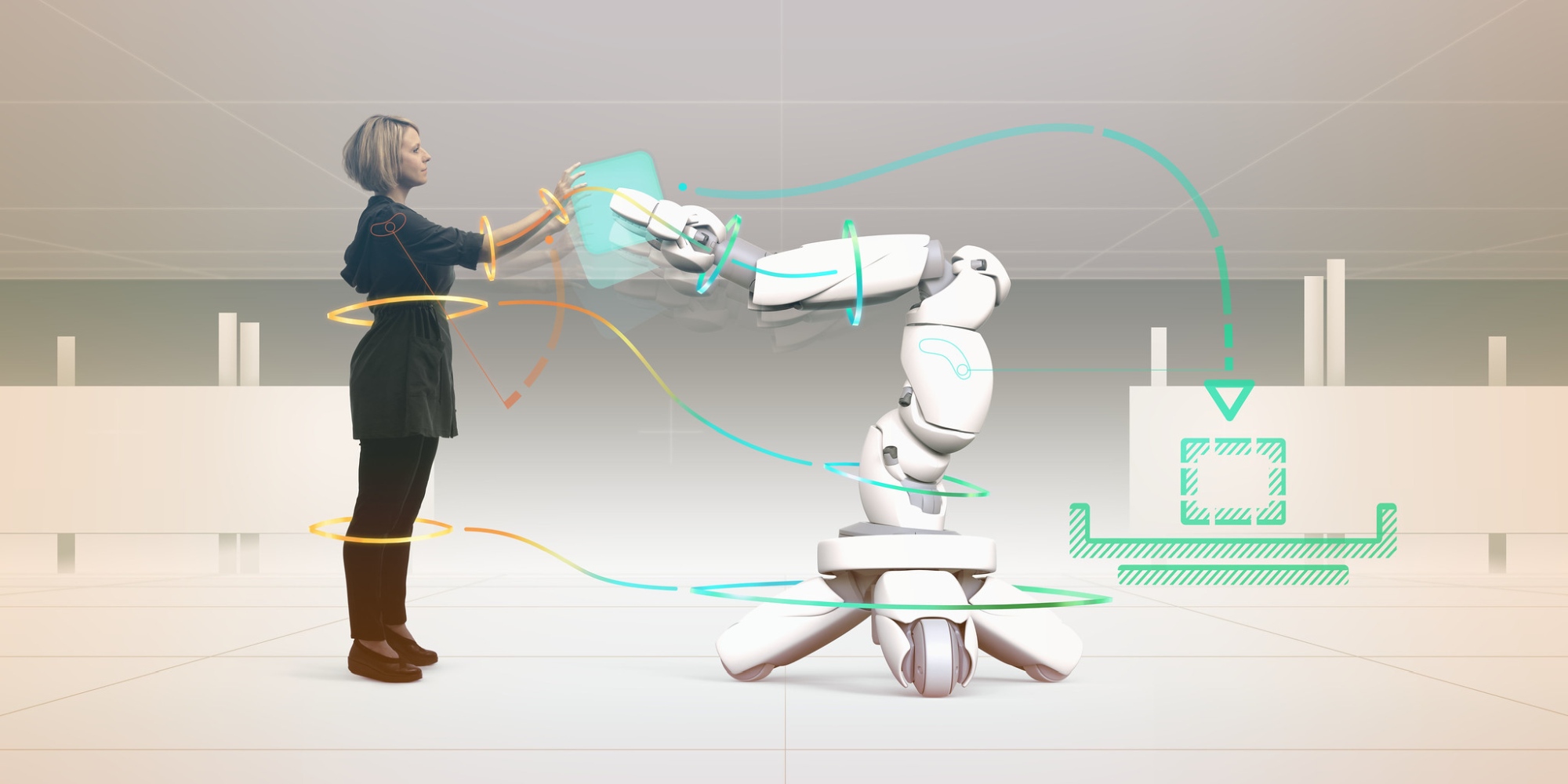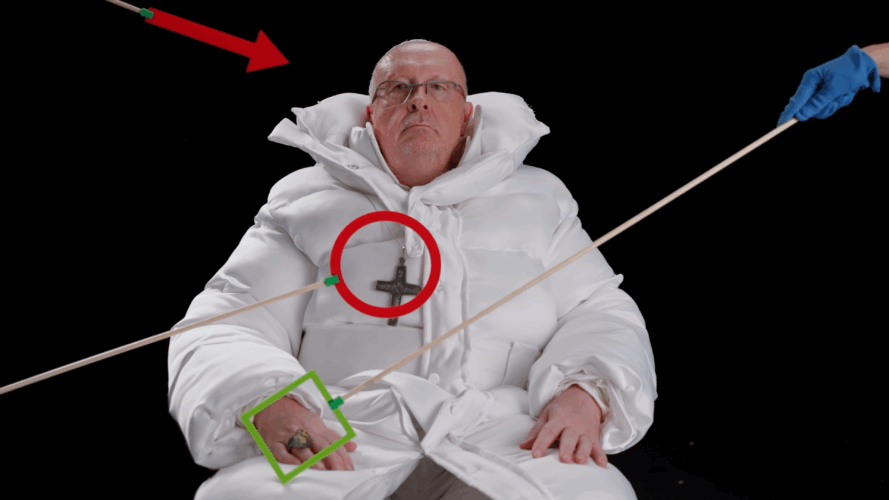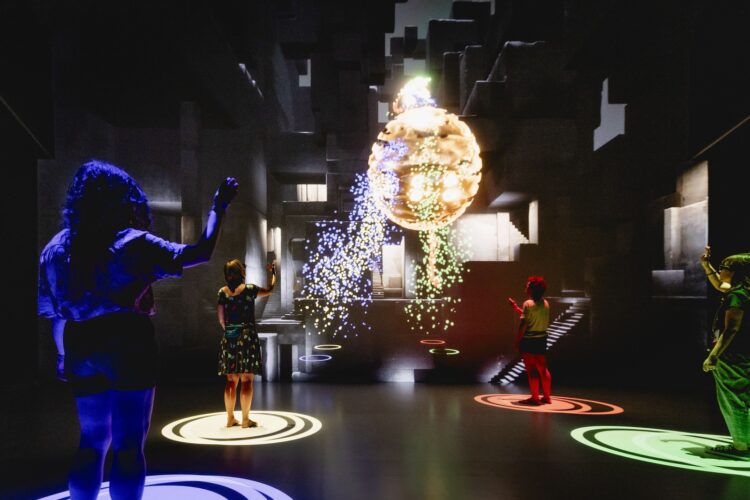How can we create spaces to experience virtual realities collaboratively?
In recent years, the focus of virtual reality research was mostly on single user systems in the form of head-mounted displays. In some cases, combined with localization methods and wireless image transmission, a limited freedom for the user to move in space is achieved. Despite of the enormous technological progress compared to earlier models, those systems still have inherent limitations by design, that can hardly be overcome. Due to the fact that the user has to wear glasses that cover their field of sight, they are completely detached from the real spatial environment.
Due to the fact that the user has to wear glasses that cover their field of sight, they are completely detached from the real spatial environment. Other users, sharing the same physical space (co-located), cannot be perceived and thus interaction with them or their representation in the visualization is hardly possible (co-presence). Virtually present persons, often visualized by avatars, have only a very rudimentary body representation and thus a limited social presence. Although there are some research prototypes trying to address this, practical applications are rare. All those systems are unsuitable for larger groups of users co-located in a shared space.
By that, virtual reality research dissociates itself clearly from its own original visions, initially described by Ivan E. Sutherland in 1965 as the “The Ultimate Display” that later found its way into popular culture as the “Holodeck”. Since then, topics relating to co-located multi-user VR systems have not lost relevance. Quite the contrary: all kinds of increasingly complex data requires extended visualizations and forms of interaction, in order to make it understandable and tangible to groups of users in exploratory settings. With the advances in VR projector technology, image generation and rendering (8K and beyond), it becomes necessary to establish a deep and broad understanding about the effective design and implementation of application scenarios building on these virtual reality systems.
In this exciting field, Deep Space is a pioneer environment of practical research. Since its opening in 2009, it has attracted more than two million visitors and has profoundly shown how VR spaces for multiple co-located users can not only be designed, but also successfully run. The VR experiences realized in Deep Space over the year are manifold. This includes, aside of the daily presentations and special programs, specific scenarios such as rapid prototyping of simulations, e.g. of autonomous mobility systems, research on human robot interaction, dance and theatre performances, as well as medical education and training. However, similar infrastructures are still rare, since a lot of specific knowhow and experience is required to replicate them. Therefore, it is necessary to address the topic of immersion of user groups in projection-based, room-scale virtual reality systems on a more general level. Based on the models and mechanisms of perception and interaction found thereby, specific requirements for the design and the implementation of similar future environments can be derived.
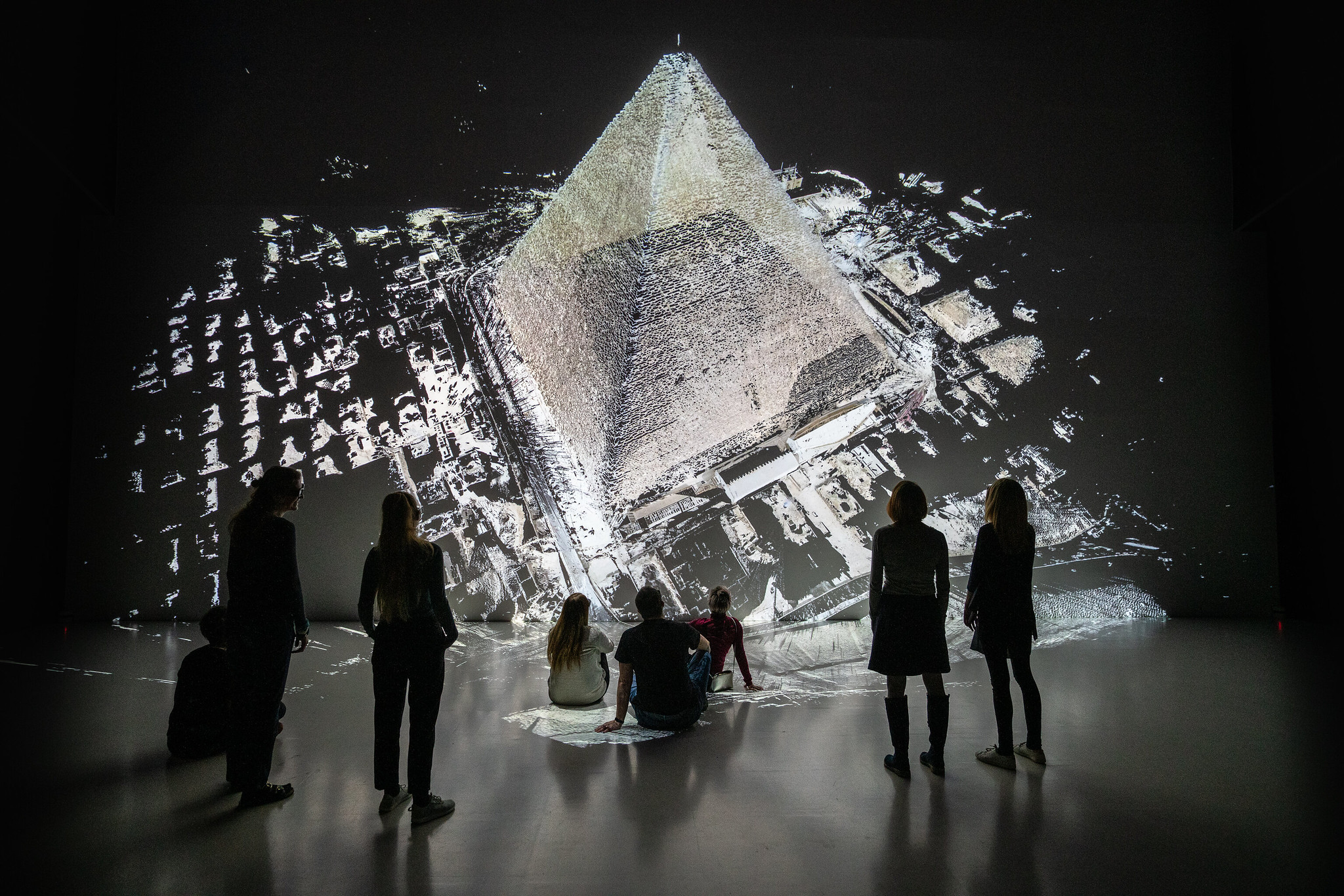

Research indicates that besides the ability to interact (agency), spatial mapping (perspective) is the second core factor for the perception of immersion and presence in VR environments. But existing theories do not take co-located multi-user interactions into account when defining their models. Therefore, we propose the building of an extended model of Coimmersion. Through the experience of creating many diverse applications for this space over the years, recurring design patterns have emerged. One factor identified is that even the perception of actively interacting users in a shared co-located VR space can create and intensify the feeling of one’s own immersion. Another one is that users need to be able to intuitively verify and understand the agency they have in this space. Considering these and other factors, which still need to be identified and exposed in future research, the research will lay the foundation for the formulation of specific guidelines for the design of experiences and especially the technical system requirements of a versatile, multi-functional and coimmersive environment.
Key Works
Related Blog posts:
That’s what the new Deep Space EVOLUTION program looks like
Virtual Worlds
Why trust robots?
Resonant Media – How 8K can affect perception and emotion
